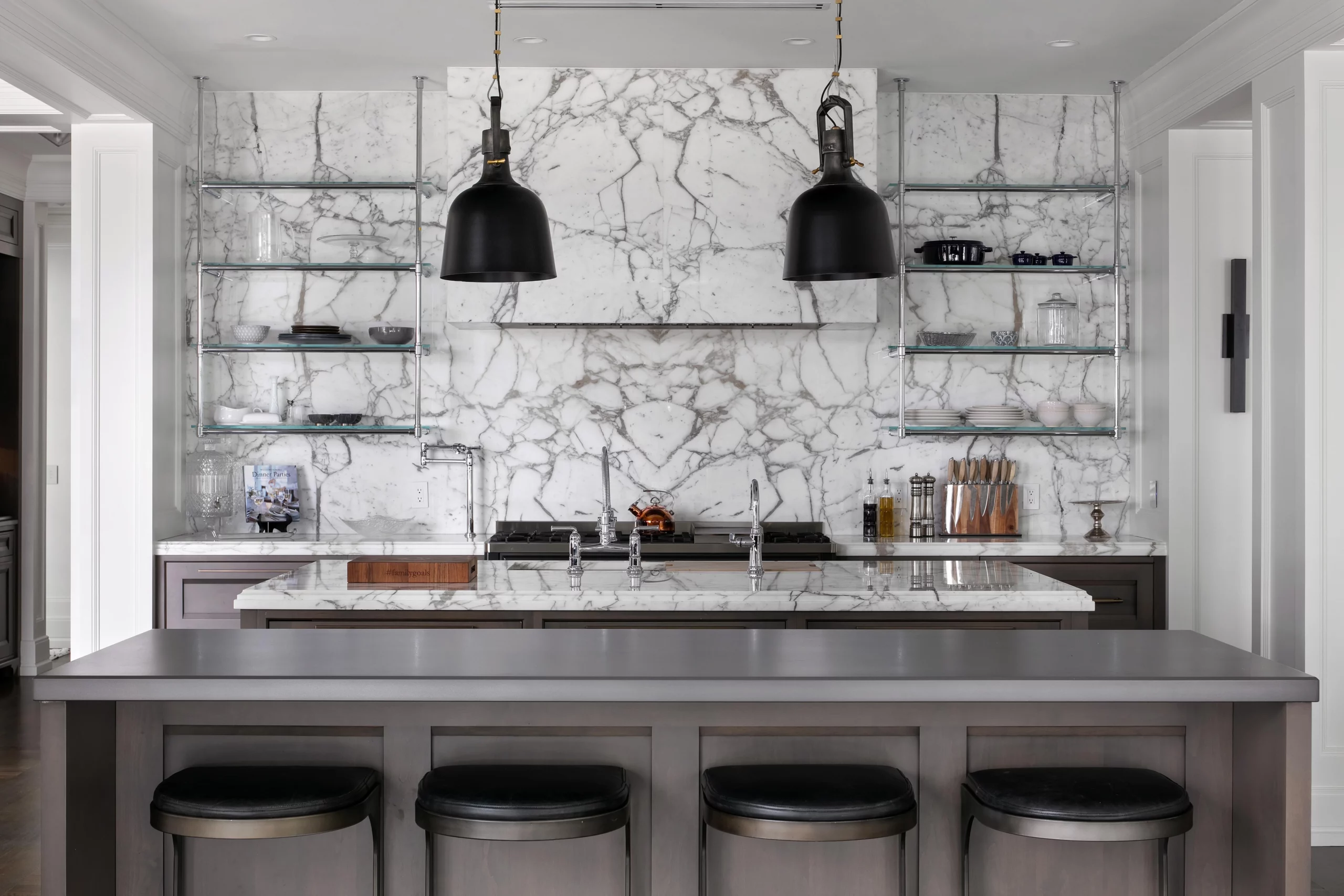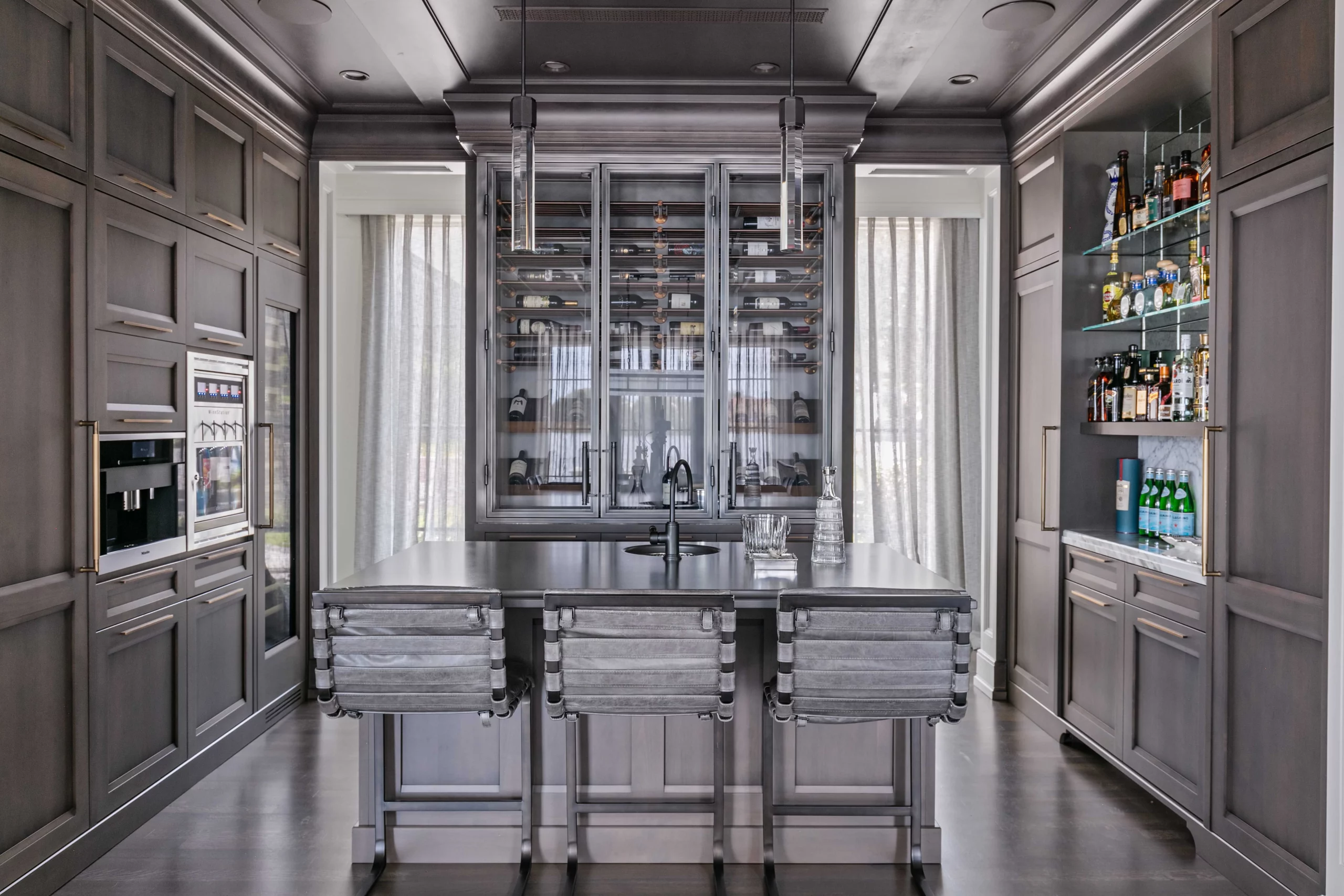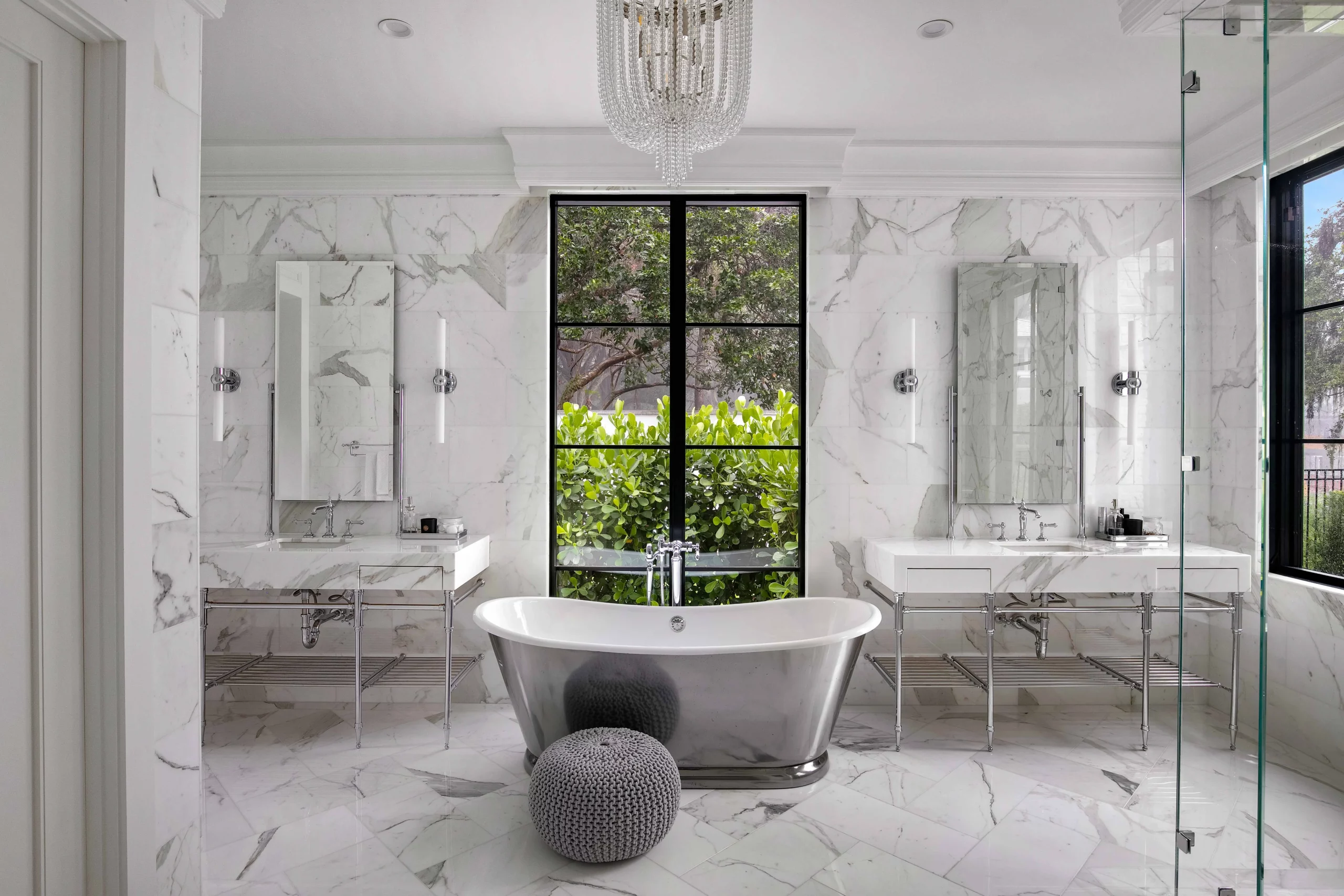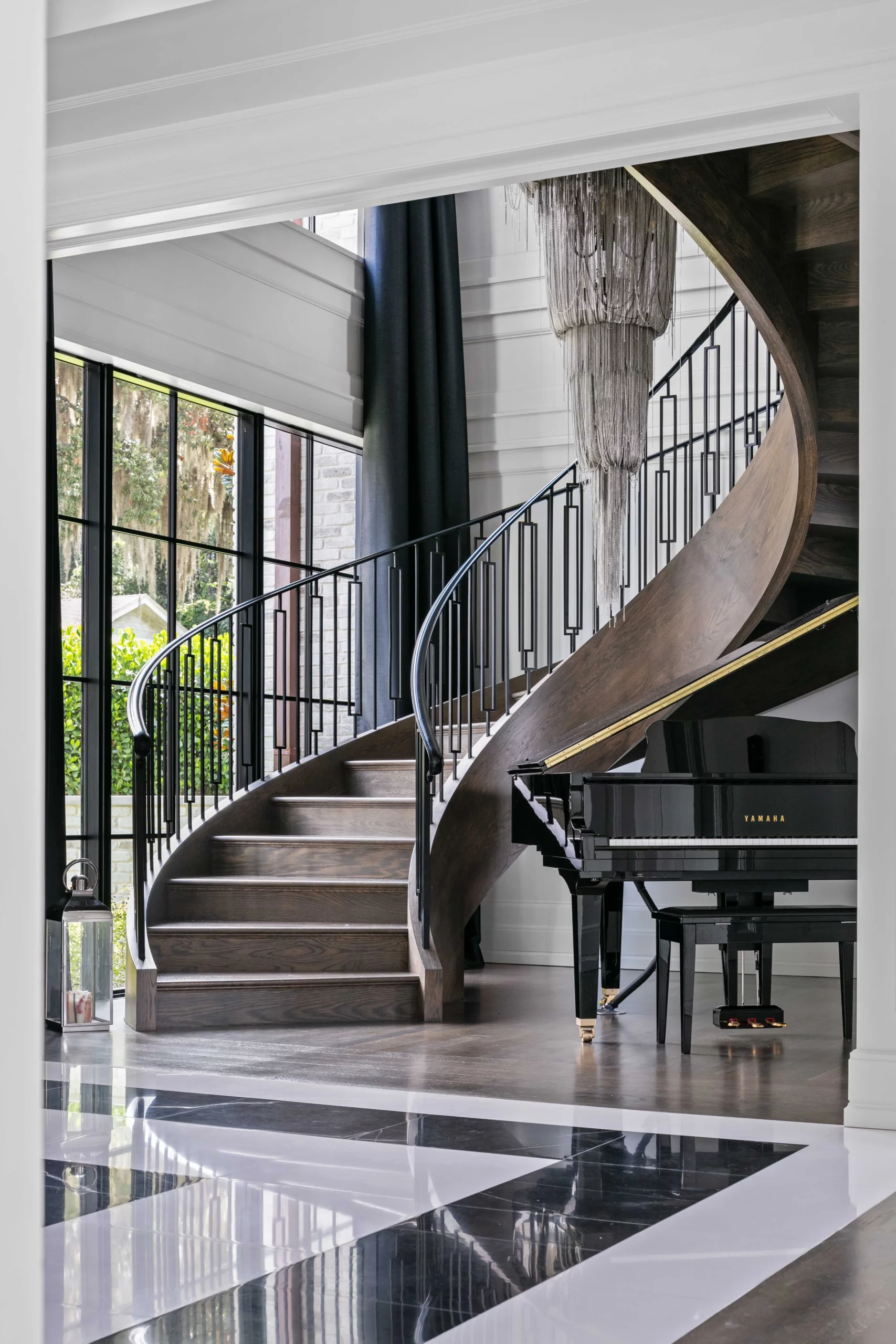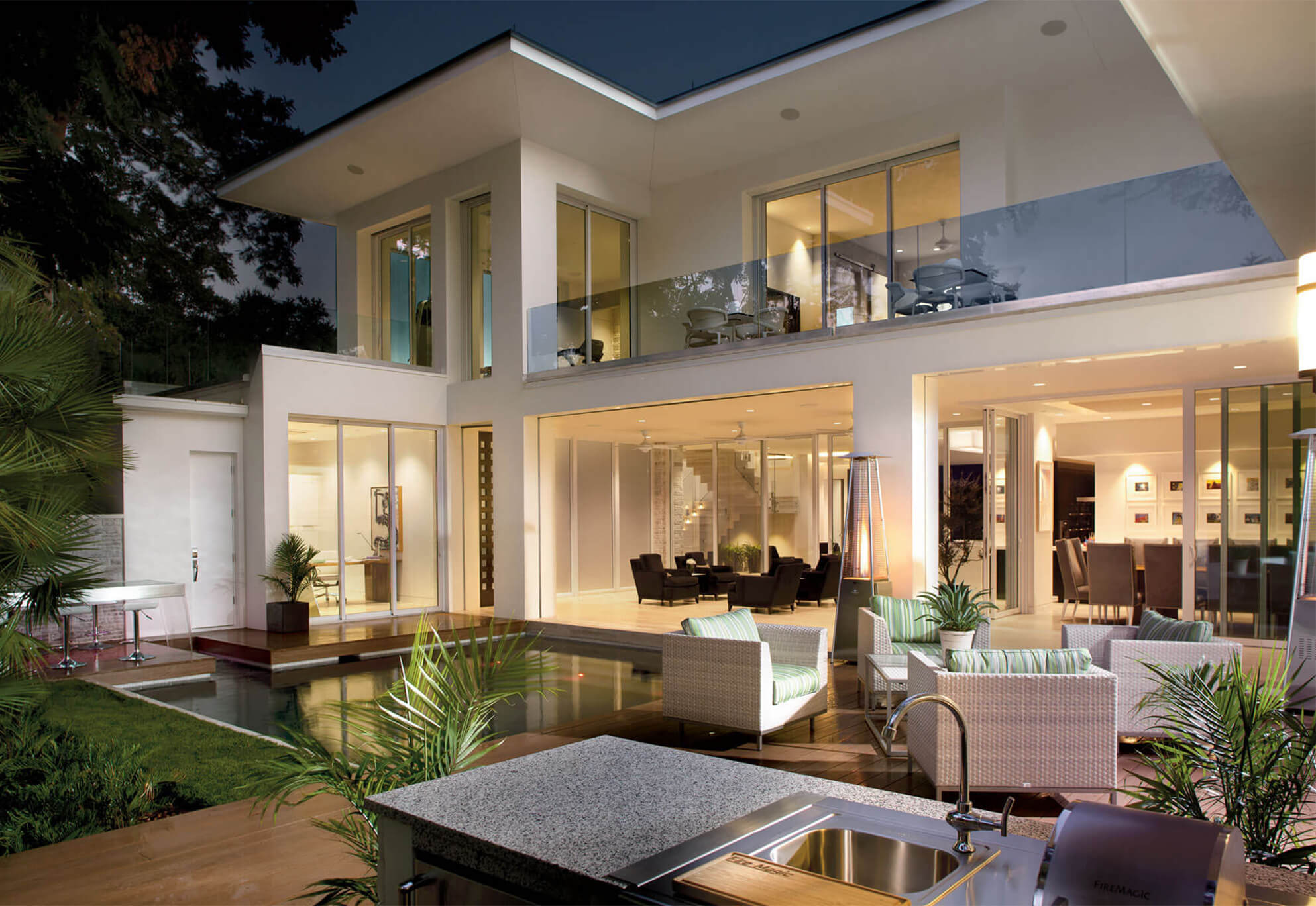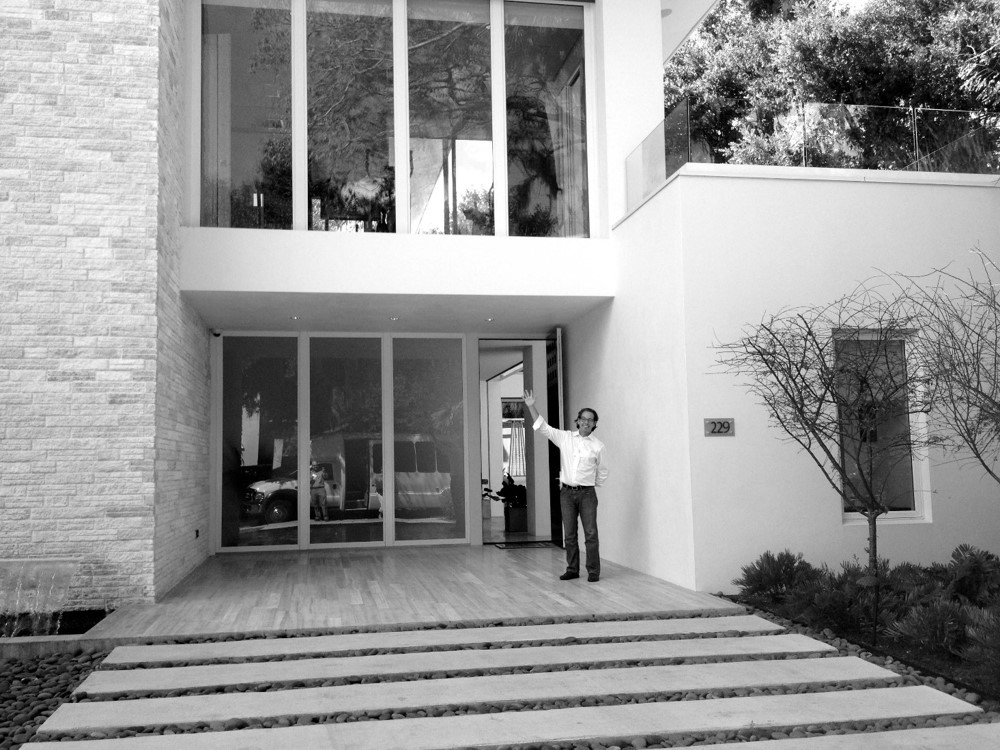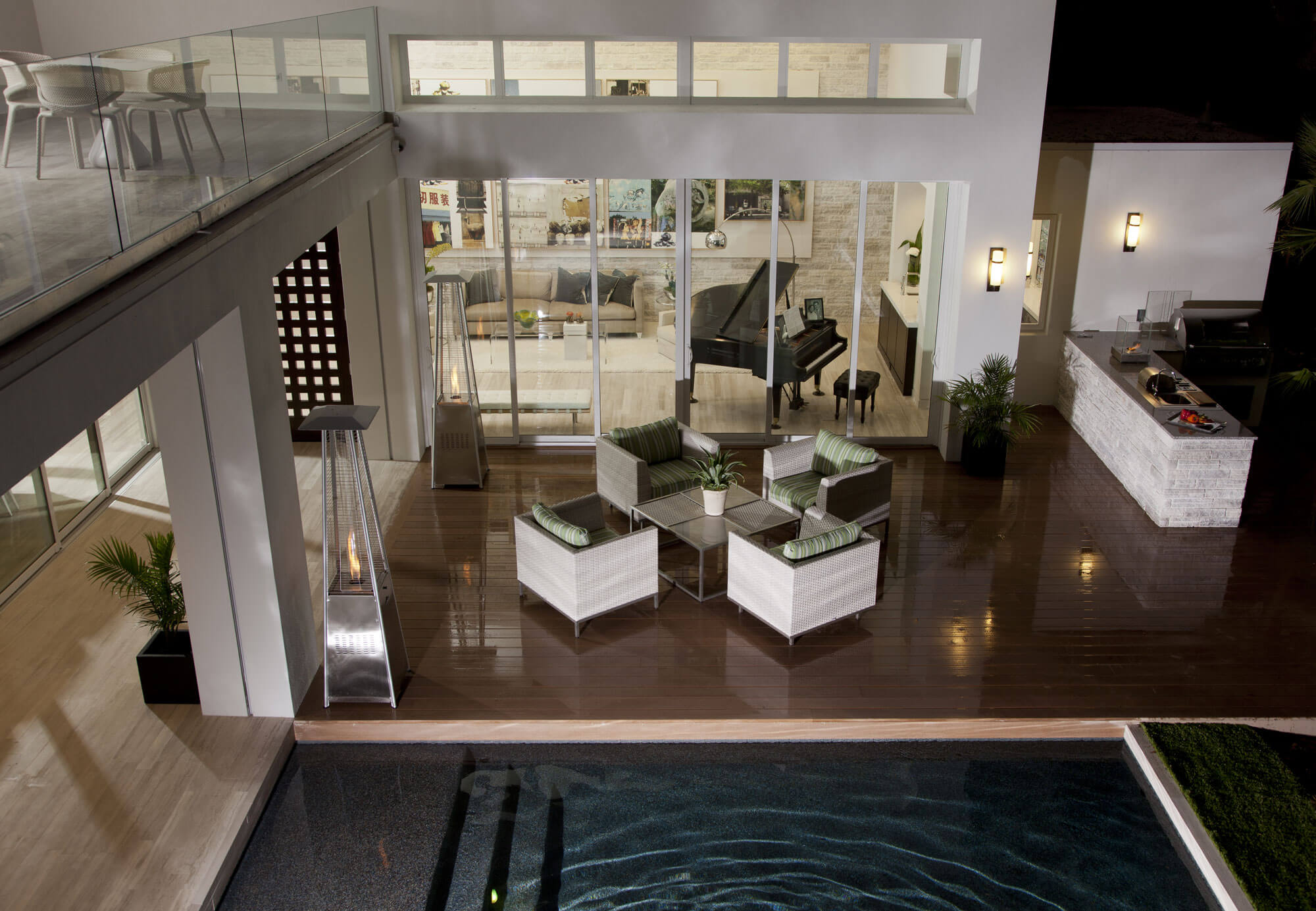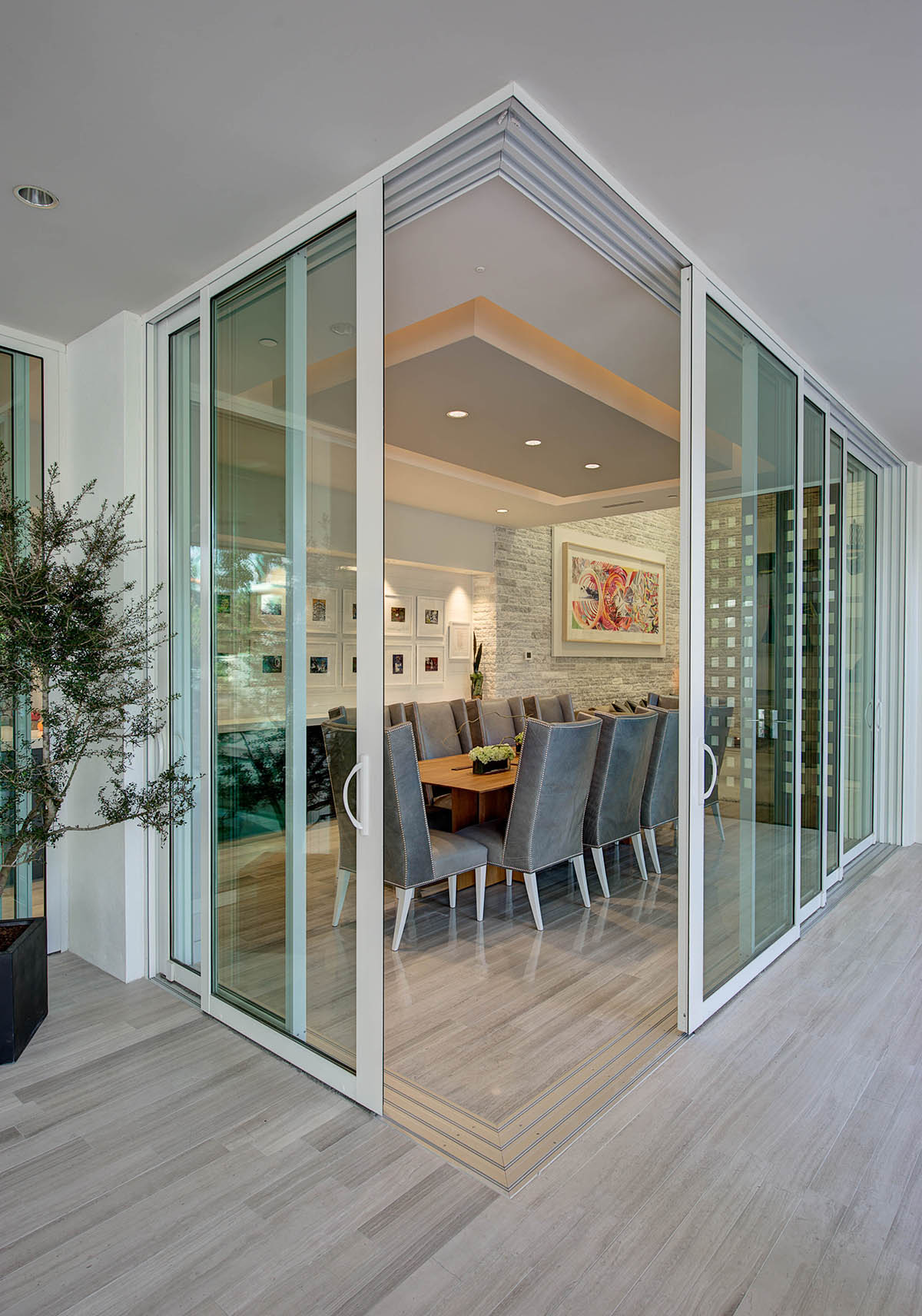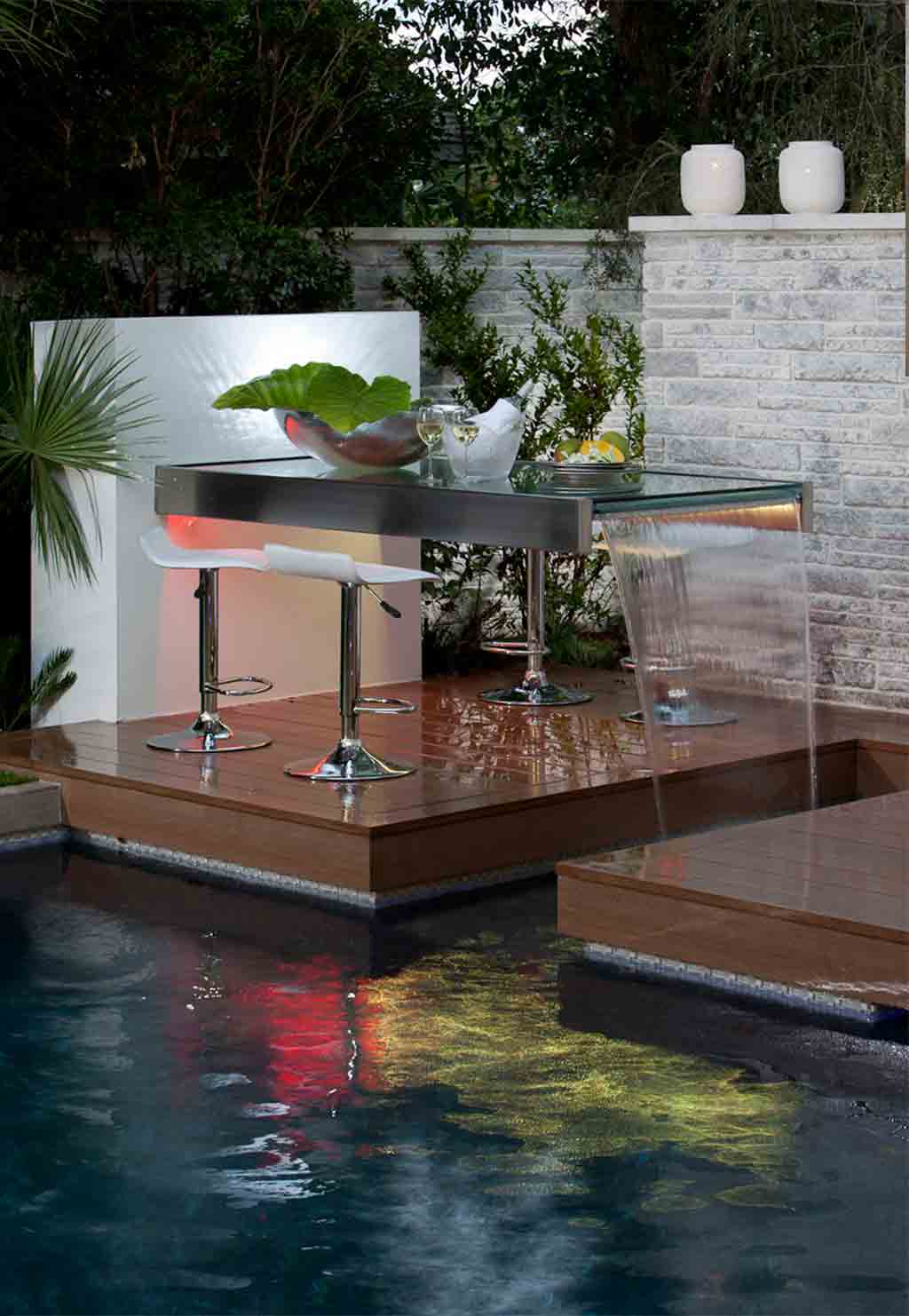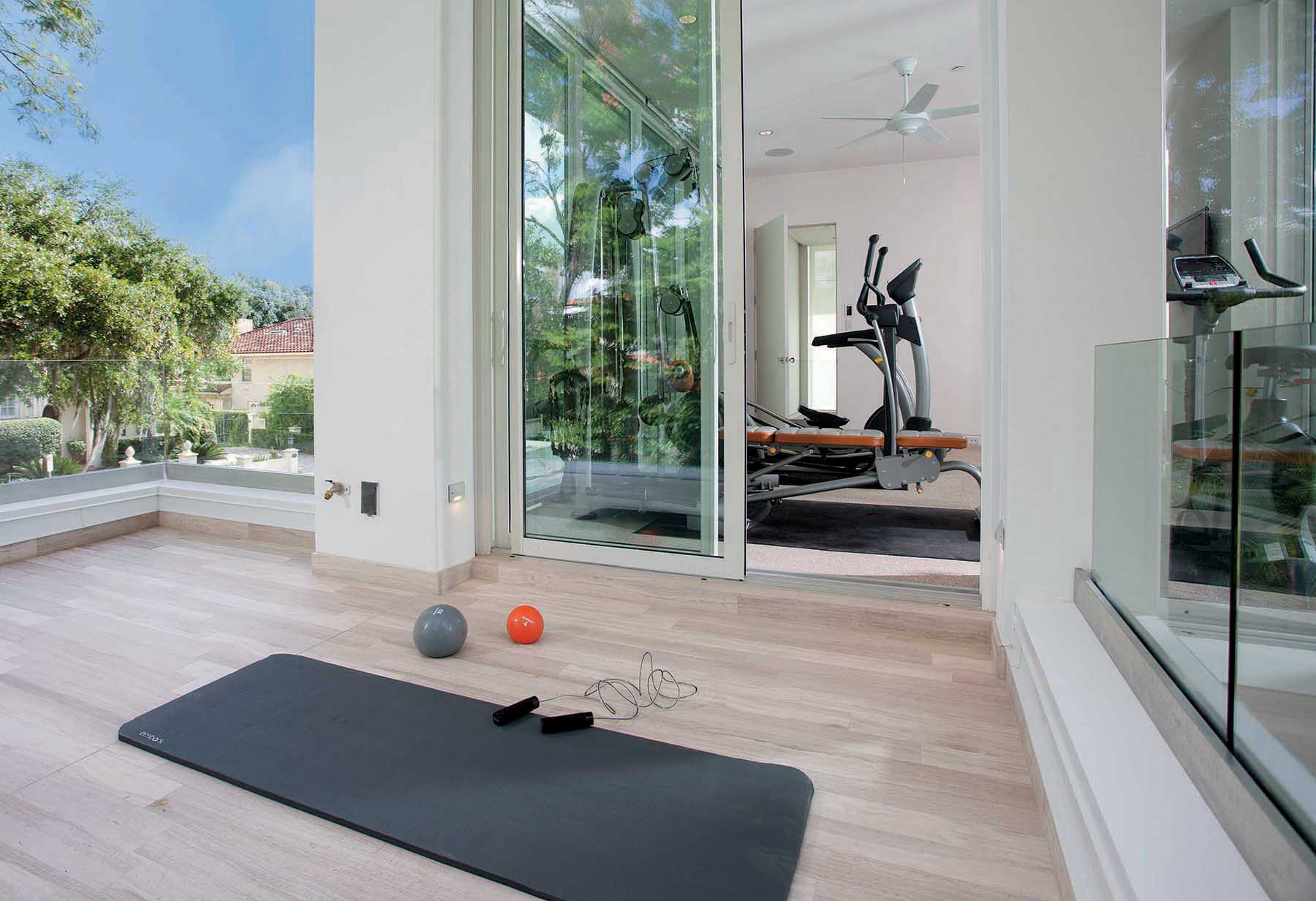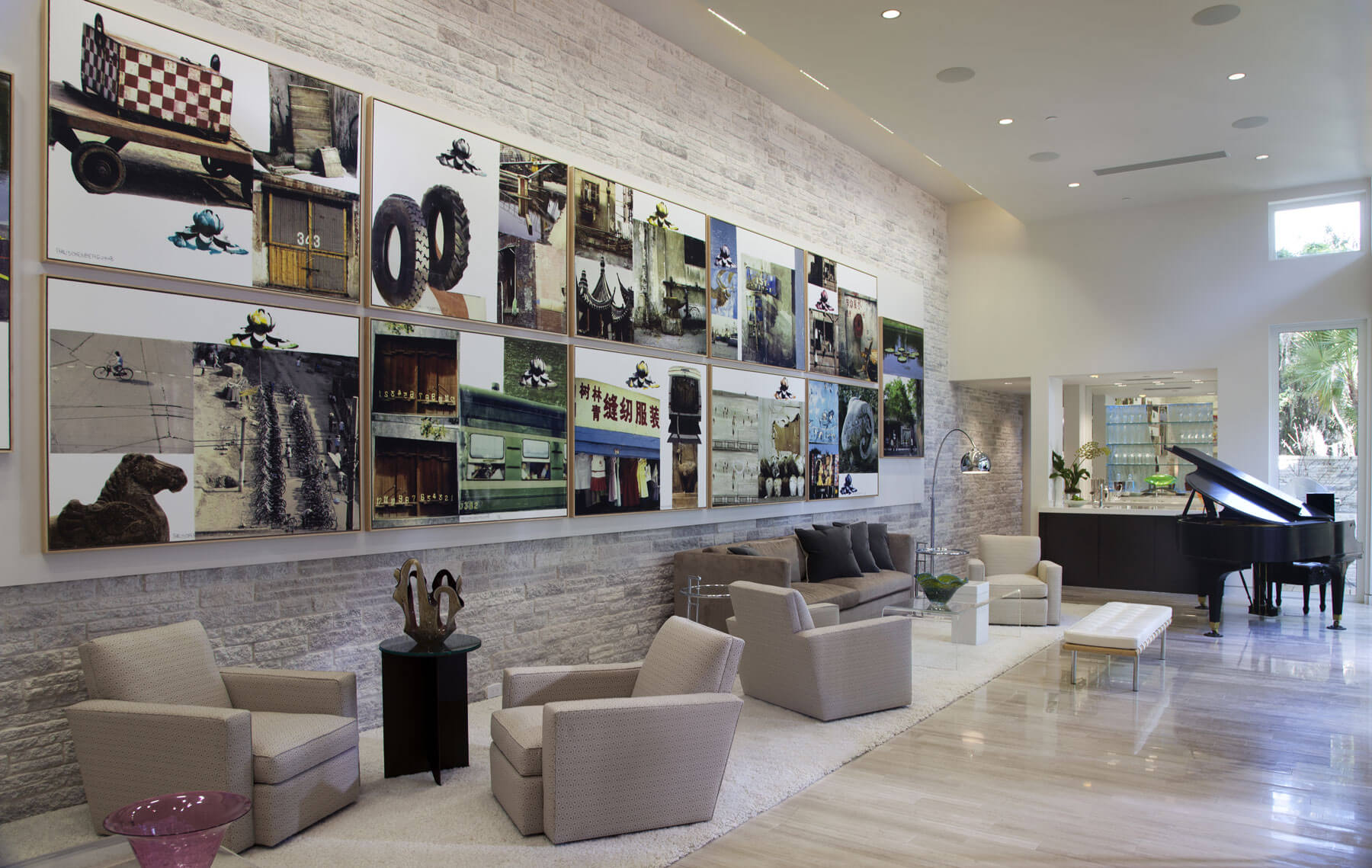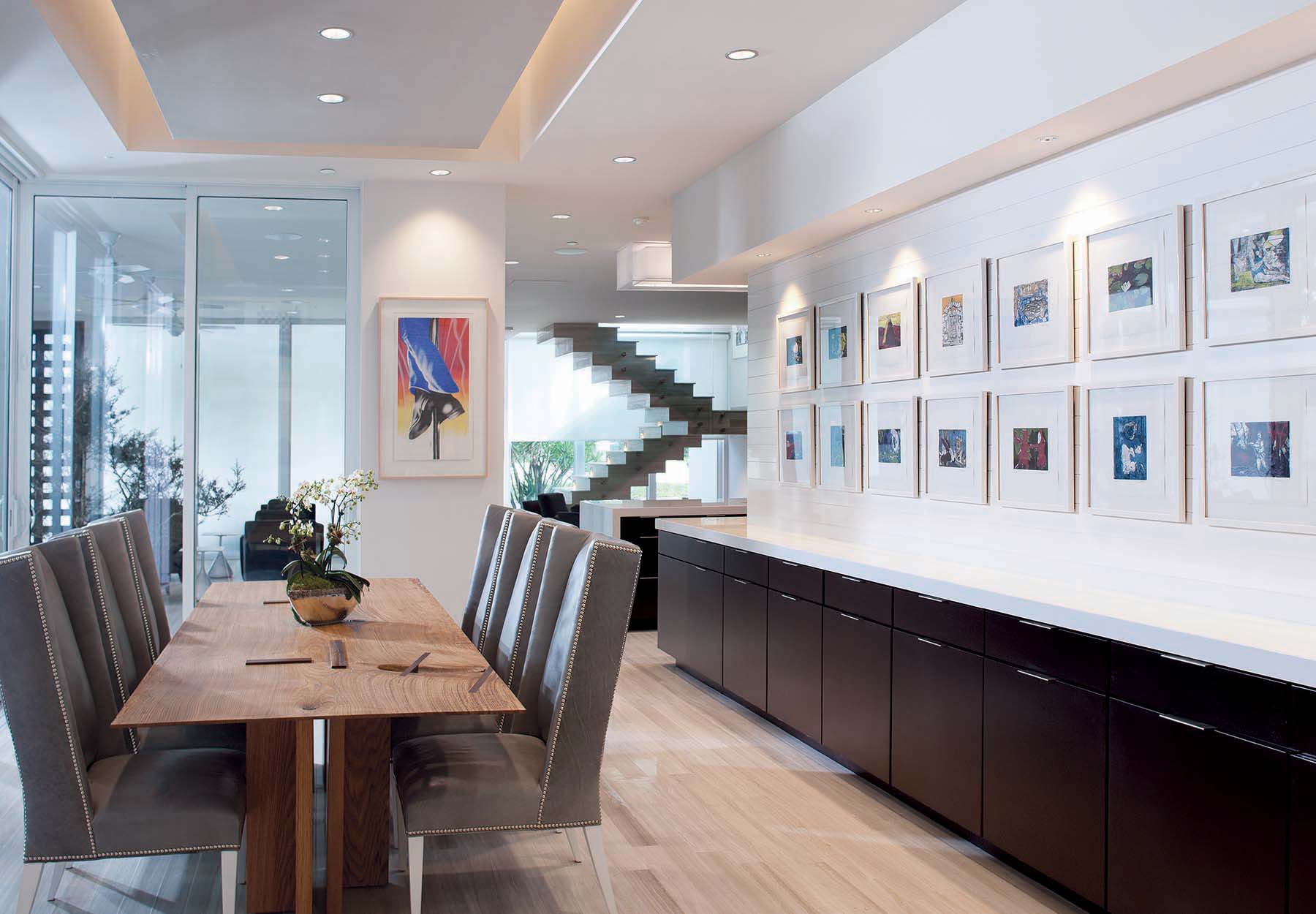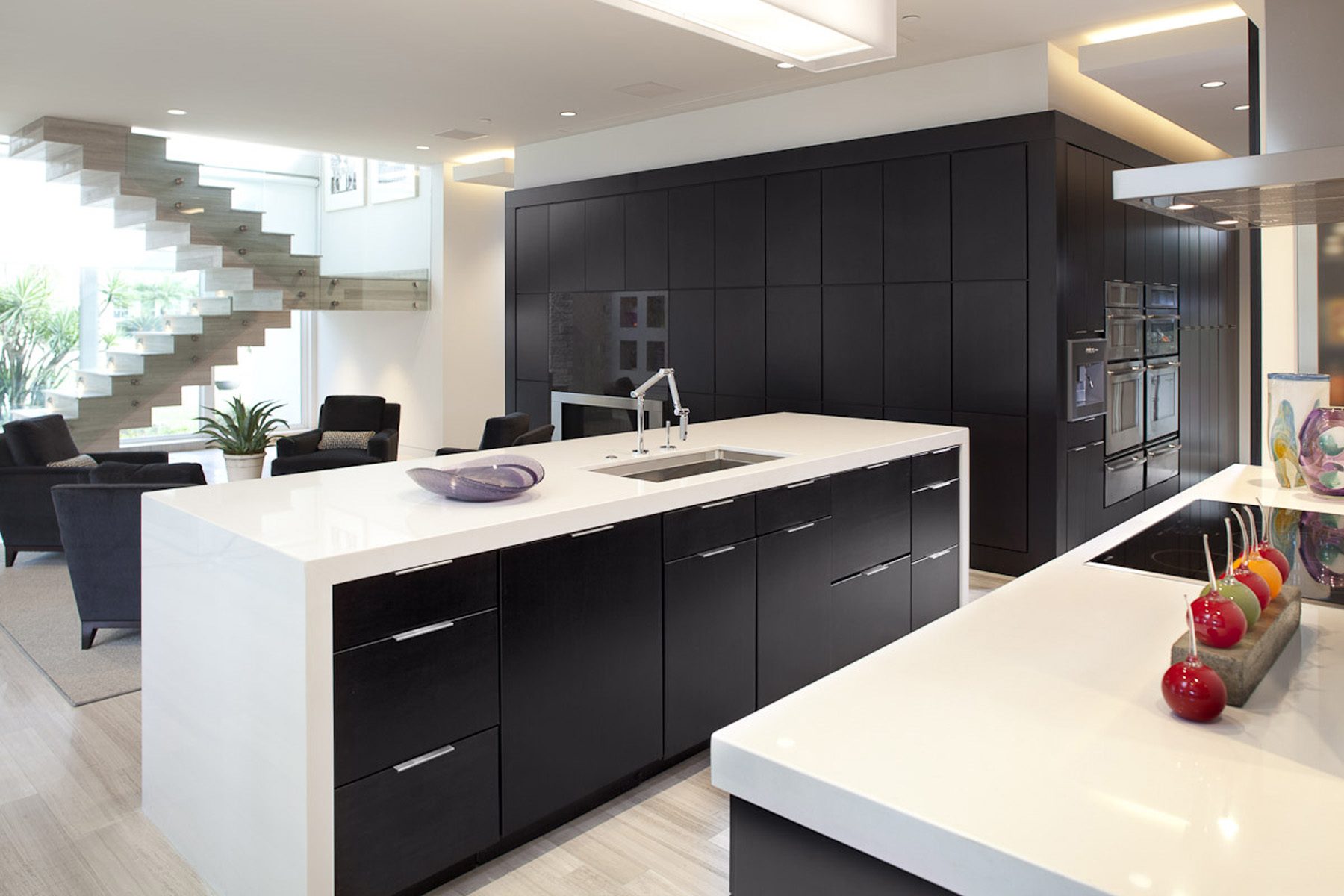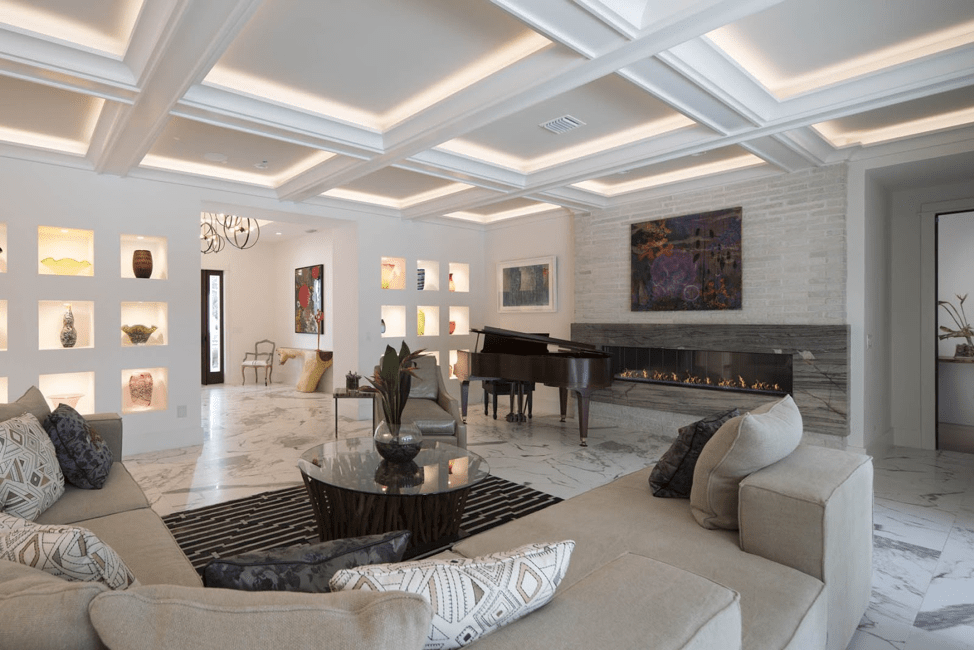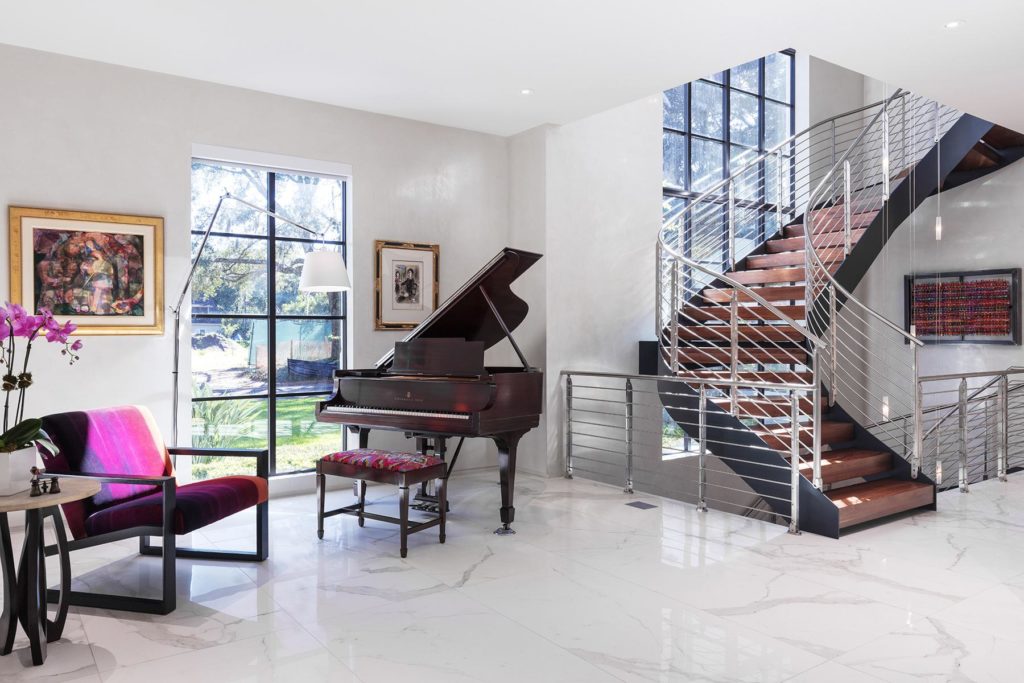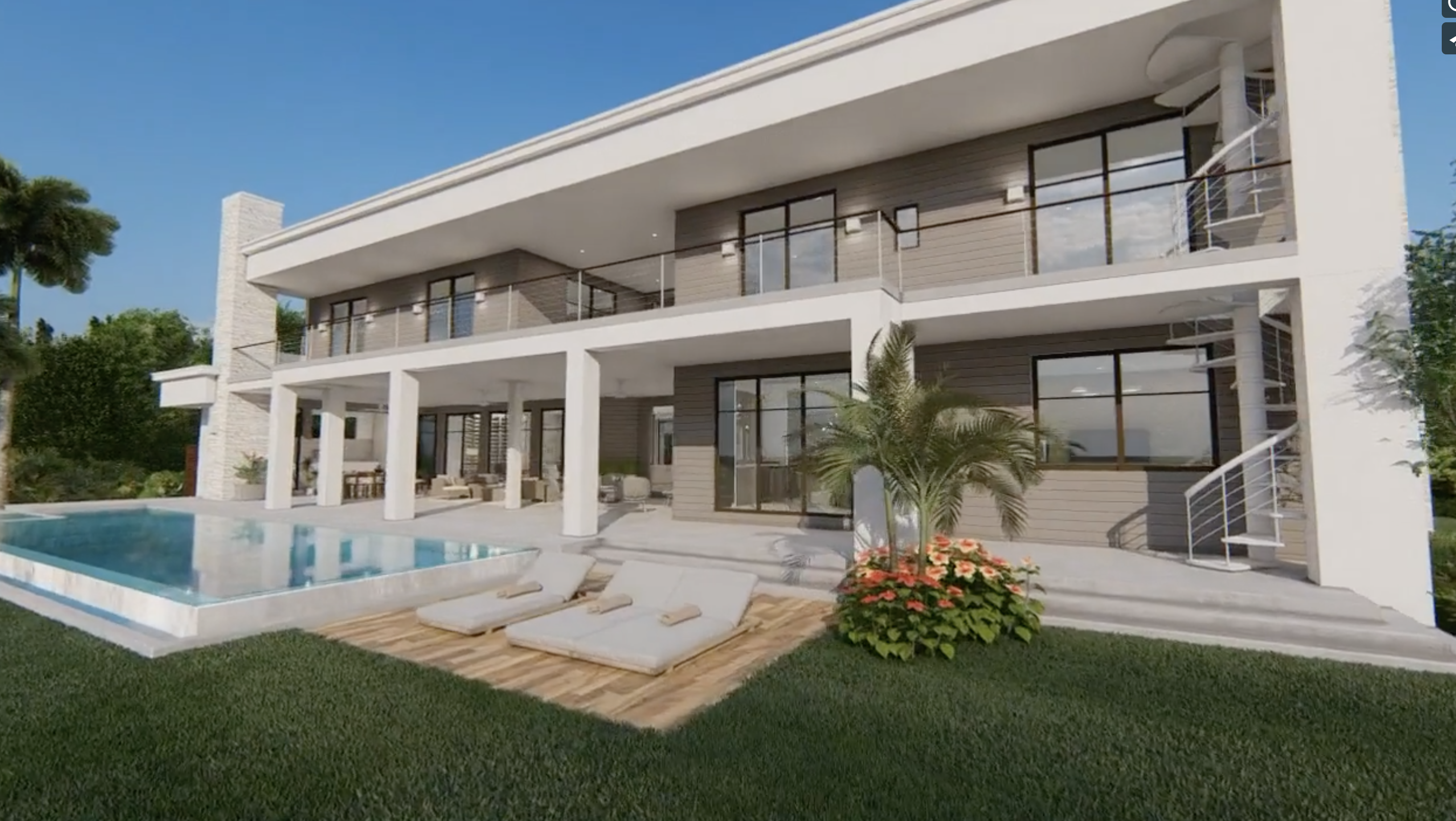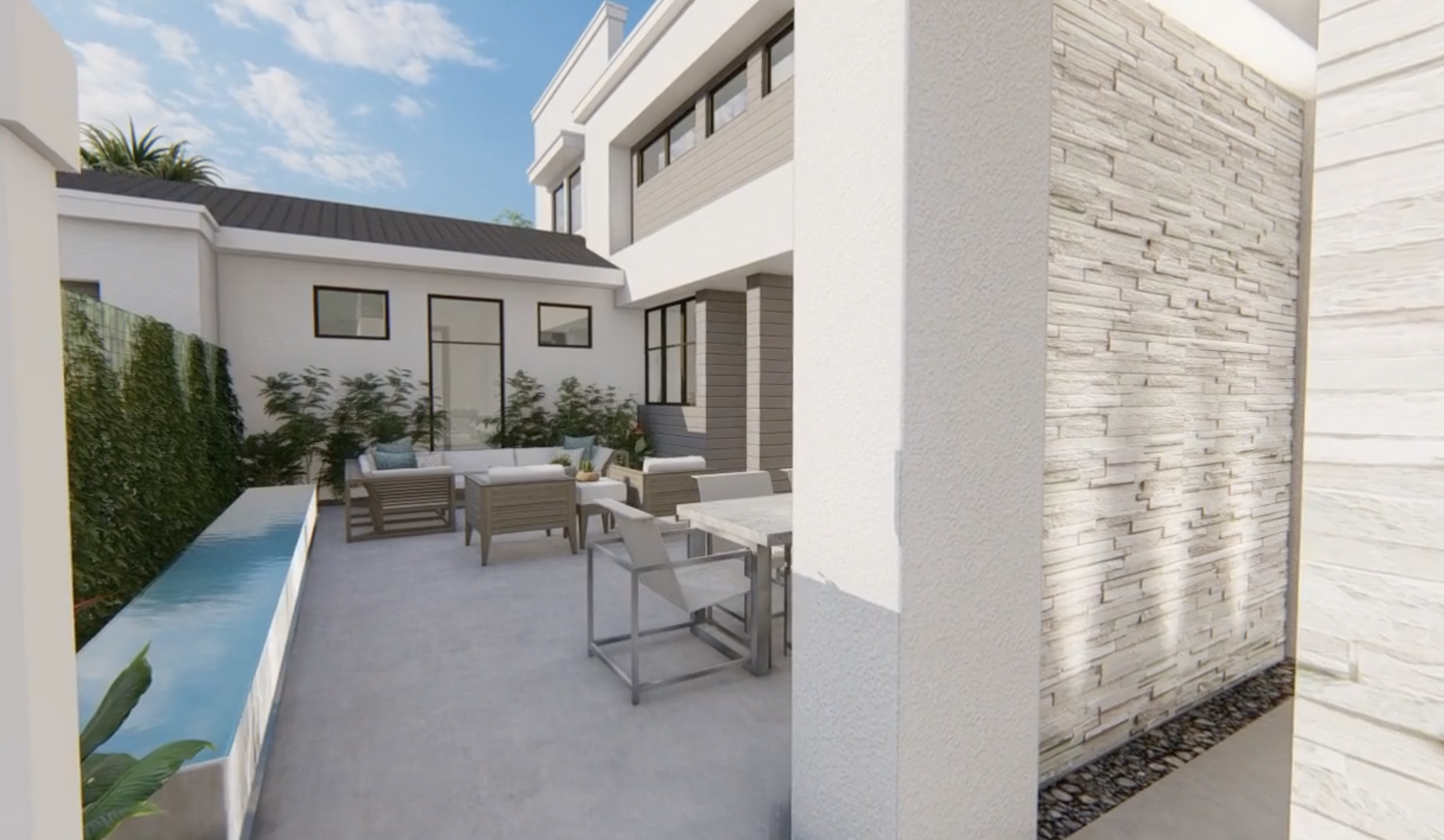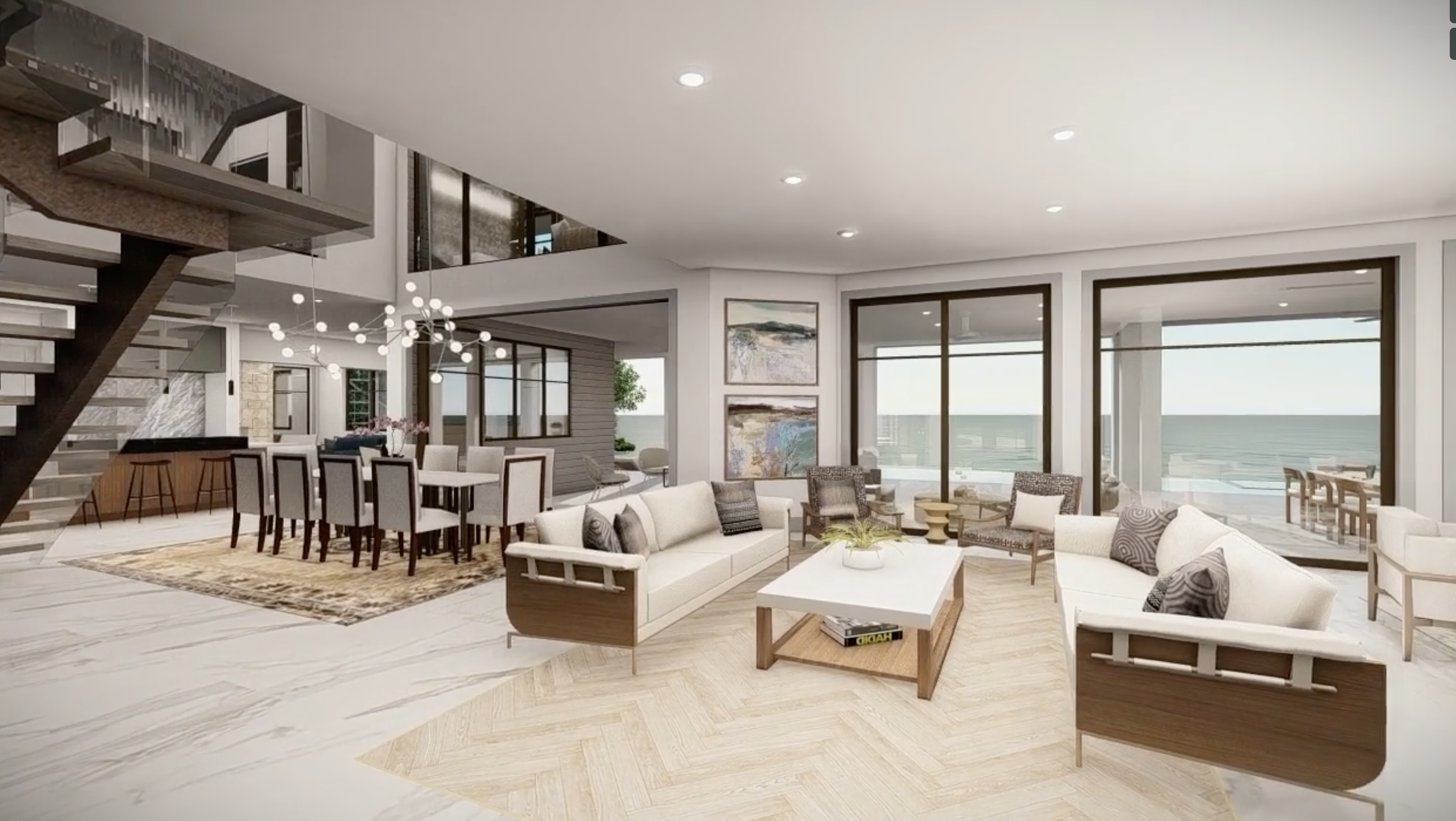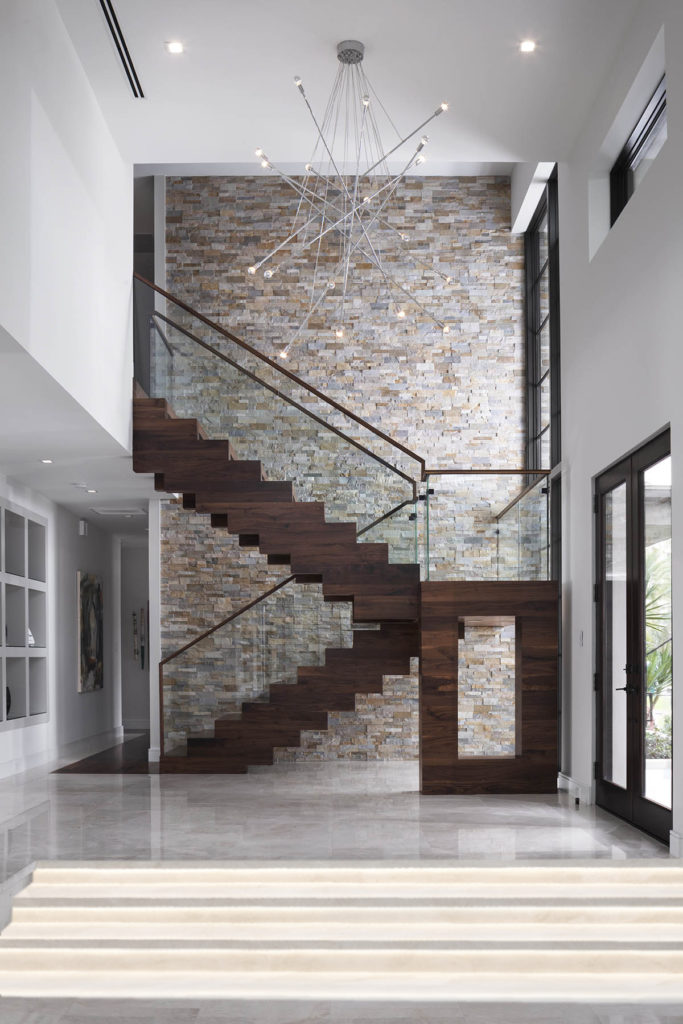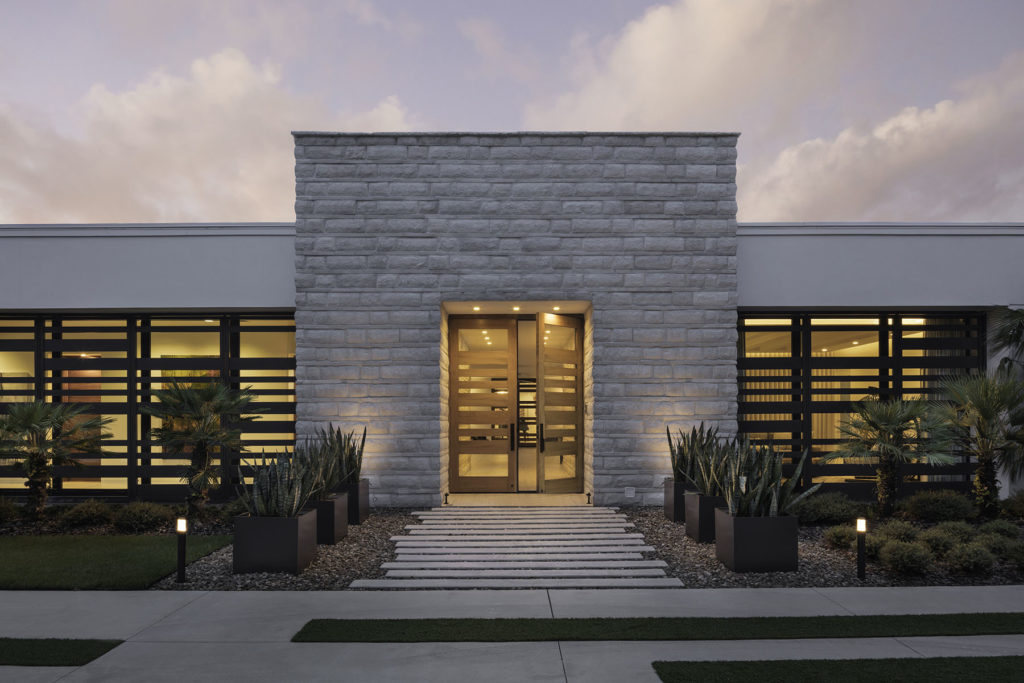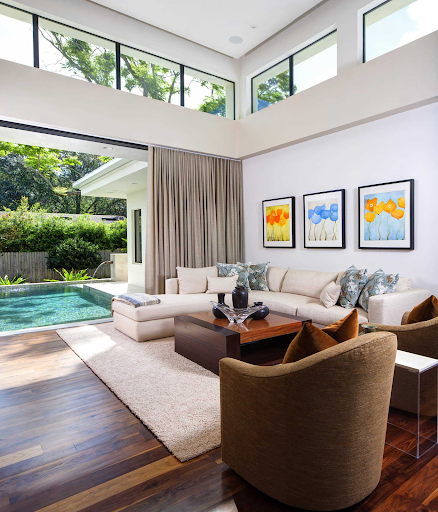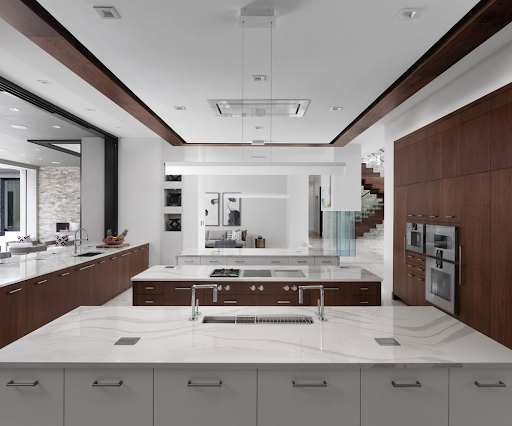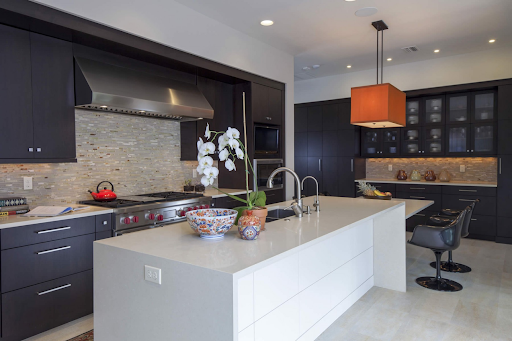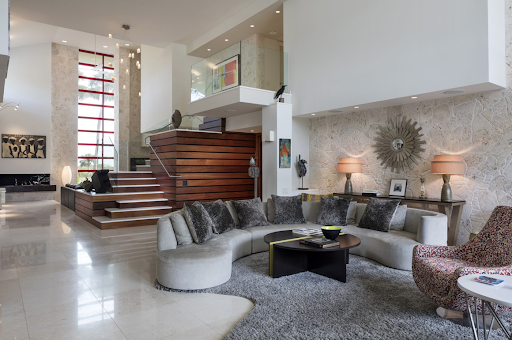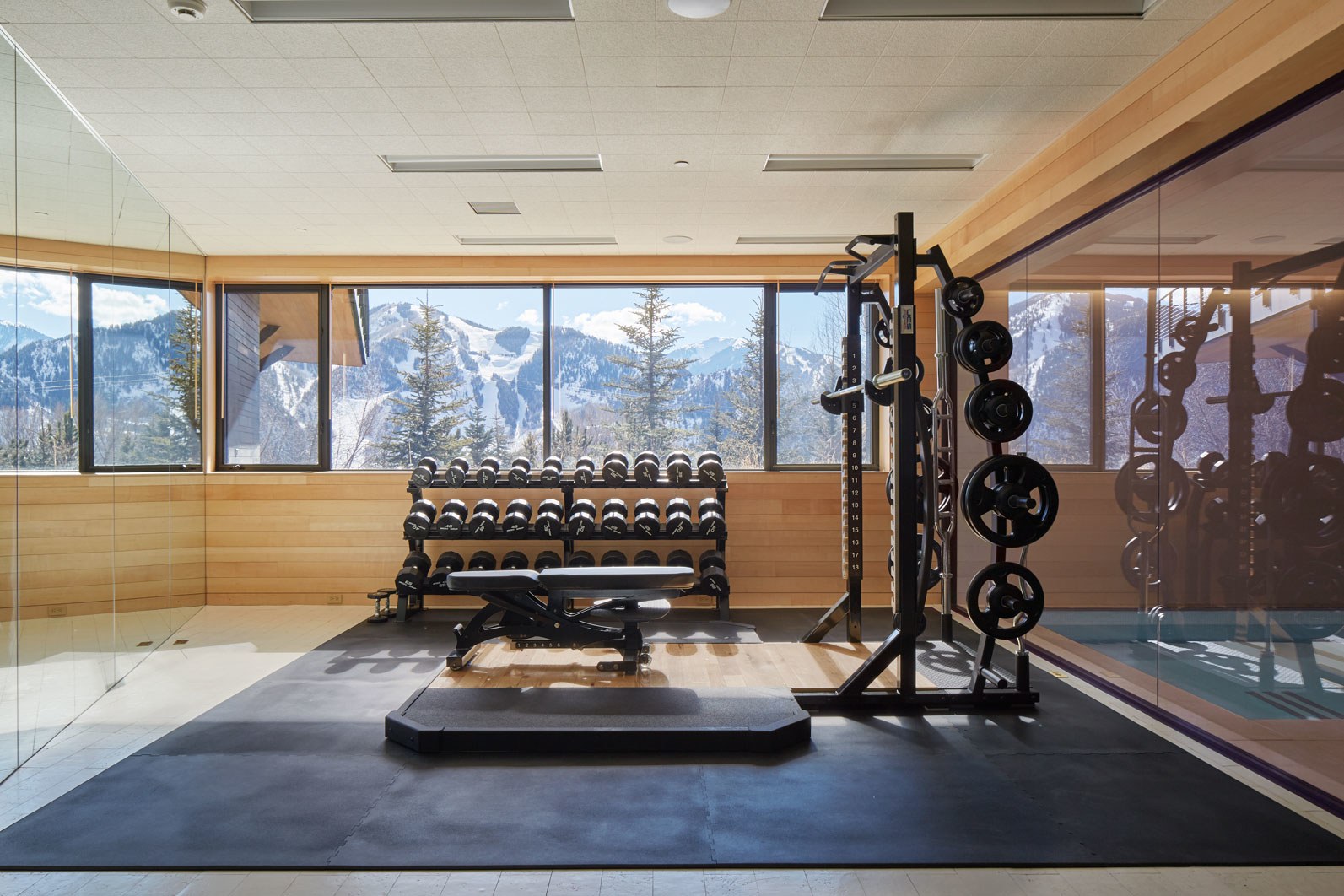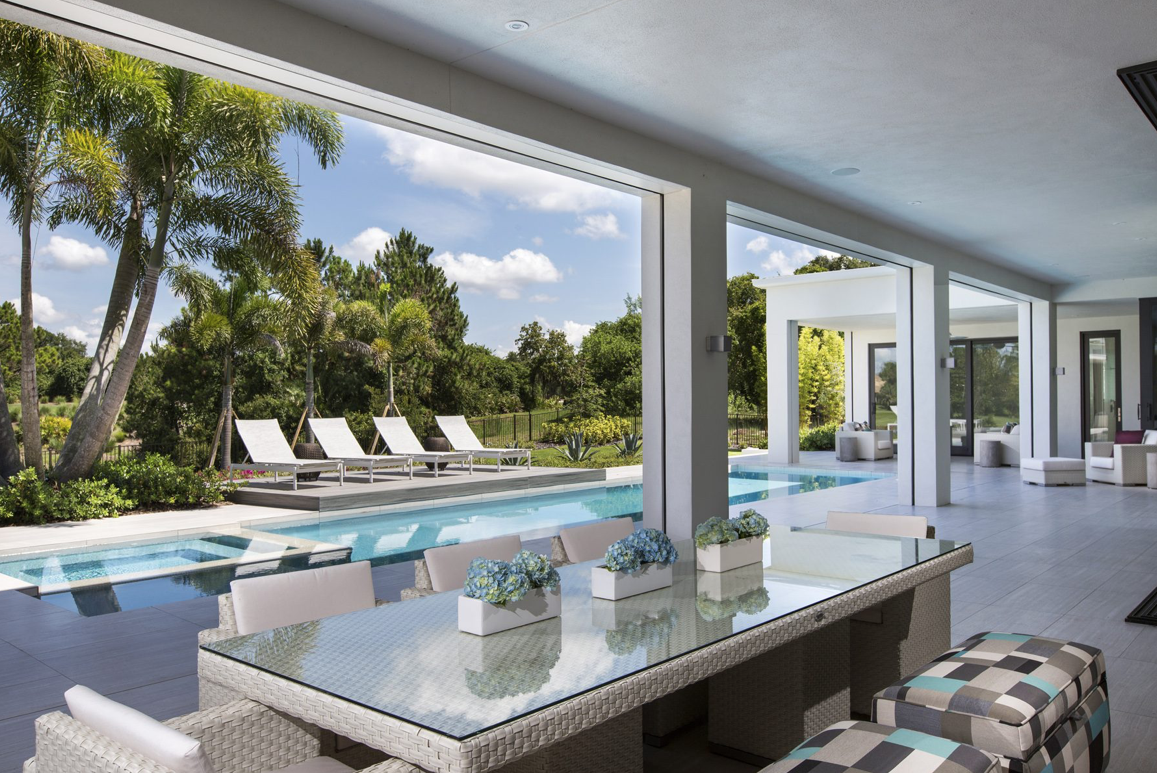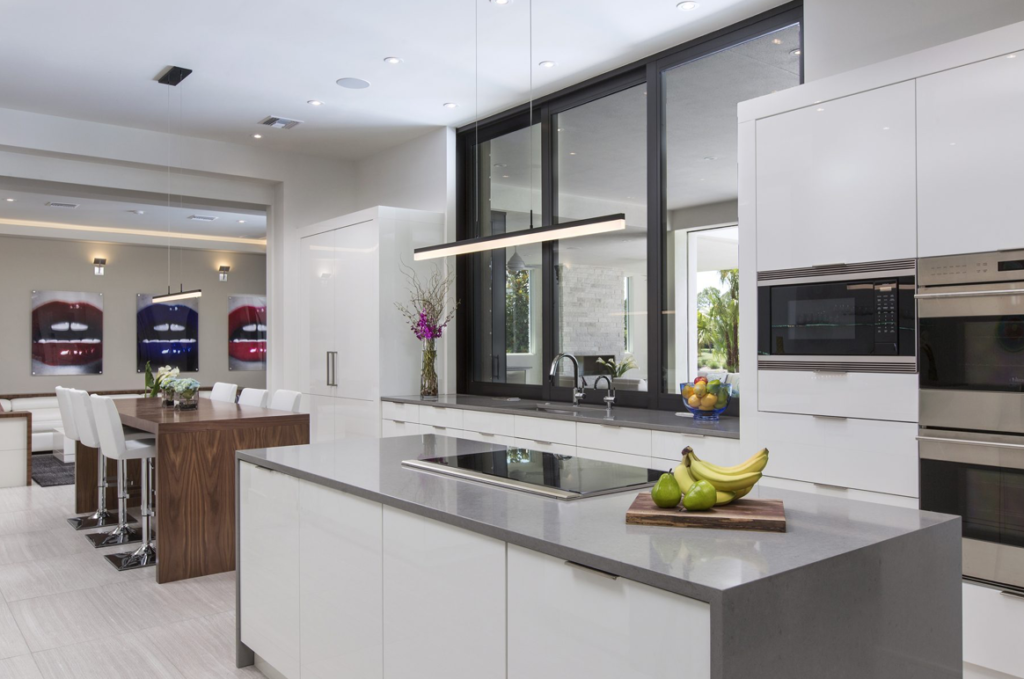The Origins of a Modern Architect: Getting to Know Phil Kean (Podcast)
Comments Off on The Origins of a Modern Architect: Getting to Know Phil Kean (Podcast)Phil Kean is a nationally-awarded modern architect with an office in Winter Park, Florida, and breathtaking modern residential projects across the globe.
The Phil Kean Design Group (PKDG) team has been recognized with prestigious awards in the world of architecture and construction including:
- Best Home Builder – Orlando Magazine
- 3x Consecutive Award Winner: Best of Winter Park: Best Home Builder – Winter Park, Florida Chamber of Commerce
- Best of Houzz Design – Houzz.com
- Platinum & Gold Awards: National Association of Home Builders – Best in American Living Awards
…and so much more!
We’re happy to dig into how our lead architect and owner got his start, and a bit of insight into the exclusive, signature PKDG process:
Jon:
Today we’re interviewing Phil Kean. Phil Kean Design Group is a nationally-awarded design/build architecture firm voted “Best of Orlando” #1 Home Builder by Orlando magazine readers, voted Best Home Builder “Best of Winter Park” three years in a row by the Winter Park, Florida Chamber of Commerce, “Best Of Houzz” Design Award by Houzz.com, and winning the platinum and gold awards from the National Association of Home Builders’ “Best in American Living Awards”. Today we’re going to be talking to Phil to get his insight into the exclusive signature Phil Kean Design Group process.
I wanted to start with basically, how you got started in the business, and how did you begin the business in Winter Park? Amy tells me that you started it literally on your kitchen table in Winter Park. So if we could start from the beginning, that would be amazing.
Phil:
My dad was a builder, so I grew up around it, so it was always like a passion. When I started the business, it was really one house at a time and I would design it and then I would build it. And it was just me and I worked at my kitchen table. It was really pre-CAD…I wasn’t even doing CAD in the beginning stages. I started CAD…I mean I bought a book and downloaded the computer-aided drafting for dummies…I bought a book over at one of the bookstores and taught myself CAD. And then, my first year I did essentially one spec house and then the next year I did two spec houses. And then the next year I did three houses and I hired my first person. Then each year I hired another person, and I outgrew my kitchen with the second person. We moved into a small office in Winter Park. It was really very small, and then we outgrew that space and grew to a bigger space. And, all these years later here we are <laugh>. Wow.
Yeah it’s really interesting, when we did our first modern home…, I designed it almost 20 years ago and it’s on Via Tuscany, and it got a lot of recognition. A lot of people really loved that house. I designed it for myself. At the time everybody was doing the Spanish Mediterraneans, and I remember a realtor friend of mine who told me I was crazy to do a modern house, that they never sell…they’re hard to sell, I’ll lose my shirt. It really did change my career. So you kind of have to trust your gut, I guess. The universe kind of took care of me and I made some good decisions and people really liked my modern aesthetic. It was warm…it used a lot of natural materials. It was more of a mid-century kind of modern than it was like the Miami Vice modern. And it’s just grown from there. It got picked up by one of the big design magazines. It was featured in Florida Architecture, which was to me at the time a giant magazine. It came out twice a year and it was really…, they’re no longer around, but it was really an honor to be picked up in that magazine. And then Florida Design also featured it. And even today, people still pull up that house and say, “I really like this house. I want a version of this for my lot, or for me.” And so, almost 20 years later people are still appreciating that first house I did. Which is kind of cool, here in Winter Park <laugh>.
Jon:
It’s amazing. I think one of the things that we were talking about before is the design, sort of risks that you took. And I think that you still continue to take in terms of the boundaries and the design aesthetic that you are chasing, and that’s so beautiful. Really I wonder, is it something that when you were designing that first sort of modern look, I mean, did you feel sort of ostracized at all by the, I don’t know, by the architecture review board potentially, or different people who were in the neighborhood watching as it was going up? Were people sort of skeptical until they saw it come to life? Or I guess what was that process like going through that?
Phil:
Well, most people didn’t like it until it was finished. And then when it was finished, I opened it up for a Parade of Homes to the neighborhood and people came through and walked it and discovered how unusual the house was. I was inspired by different mid-century architects, so I sort of took some liberties, and kind of like thought about if they were alive, what, how would they approach this lot? And so I kind of approached it that way. There was a big fish tank in the middle and the house sort of pin wheeled around the fish tank. And, then there were these little, little moments where the house pin wheeled. So, then I brought that little pinwheel idea out to the pool. So the pool sort of pin wheeled around the spa and sort of played with the positive and negative spaces and how they reacted to each other. I think it really turned out well. So from that, people started to…, a couple architects lived in the neighborhood and they really appreciated it, they liked that it was outside of the box, and probably that it wasn’t Spanish Mediterranean. People that were in the industry, like I don’t know, I mean, I did get some criticism…like there were people that ran like the HOA’s, and they really didn’t understand me.
I tried to get on the historic board of Winter Park, and I kind of got voted out. Later down the road I got voted in, but there was a whole debate on whether somebody that was doing modern could understand history and it was sort of like, “don’t you understand that you have to understand history to appreciate modern?”. So, it was really interesting because it’s all about proportions and scale, and modern is a lot less forgiving than a traditional home. I mean, that’s why I think Spanish was so popular because you could throw an arch and red tile roof on it and it became Spanish, there wasn’t a lot of thought about it. So even today, if you do a brick home with a shingle roof, it’s traditional, well what does that mean…traditional? But when you’re doing modern and you get the scale wrong, it’s really an ugly building <laugh>. And there are a lot of ugly moderns out there right now because people just don’t understand. It’s not a flat roof that makes a house modern. We do a lot of modern houses that have pitched roofs, you know?
Jon:
I’ve seen them. I mean, that’s one of the things in your portfolio that strikes me as sort of unique from, I guess the crowd that wants to sort of aspire to the design that you do. You’re a hundred percent spot on, that you get these sort of flat roofs, just a lot of glass everywhere, a lot of concrete, but there’s not this cohesiveness. I think you’ve built this amazing sort of aesthetic where you’ve got this, exactly like you said, you’ve got this very warm and modern. When I look at your homes, the thing that comes to my mind is “that looks warm, it looks inviting”. I think that to me personally, and look, by no means am I a connoisseur of high level design, but I guess for me as a layman, when I look from the outside in to a lot of “modern design homes” today, they are about one step away from a sort of a factory <laugh>, it’s a factory with a sofa in it kind of, it’s so industrial that they they’ve lost that human touch, they’ve lost the the warmth aspect of it…and I think you’ve done an amazing job at that. And I think the roofs, and the way that you’ve designed that as well where you do have the pitch and you’ve got the angles letting in the light, it’s absolutely amazing.
Phil:
Thank you. Thank you. Well, we/I do believe in a lot of that indoor/outdoor kind of connection with glass, and I like to use materials that can go inside and outside and be cohesive with that. That’s just something I’ve always appreciated. I think it’s important. Light creates a good balance and well-being for people and I try to capture as much light as I can. But indoor/outdoor is really a key design feature for me.
Amy wanted me to mention somewhere along the way that we were the best designer/architect in Winter Park for the last three years. I don’t know if that’s important or not, but I would say that’s nice in the sense that my neighbors appreciate what we do. And whether they hire us to build, they appreciate what we do and or design. A lot of times I’ll have people say, “One day I’ll have a Phil Kean house,” which is such a compliment, such a nice thing for people to say.
You know I look at every house as “What’s the best that this house can be?”, and I call it my award-winning concept. I want every house that ever comes out of here, out of our studio, to be award-winning, whether it’s an expensive home or a tiny little home, there needs to be something that makes this worth winning an award. We won an award several years back, it was the Best in American Living Award put on by the National Association of Home Builders, and there were these big, big homes in the competition, and ours was like a 4,800 square foot home, and we won the Grand Award. One of the judges came up to me and told me that it was about the quality of the spaces and what I did with it that made us win over these obviously much more expensive homes and much bigger homes that were in the competition. And the comment was, “It was just so livable,” all the people could just see being there. So I thought that was one of my highlights. Another thing that was really something that I’m proud of too, is that the AIA, the American Institute of Architects, awarded us the “Builder of the Year”. Now that almost always goes to commercial. You know it’s commercial based…, it’s the big ivory towers and the engineering marvels that win those. The people that build those structures and design those structures are the ones that always win these awards. So, it’s very interesting that we won as a residential architect. I feel like that was a big honor, something I’m very proud of.
Jon:
As well you should be, I mean, that’s phenomenal. You’re a hundred percent right. I mean, those awards always tend to go to these very interestingly shaped, or abstract, or very difficult to solve construction type problems <laugh>, you know commercial spaces. And, I think that says so much, I mean, I believe there’s over, what is it, 20,000 architects coast to coast right now plus, at least the last time I checked AIA that’s what it was. It was a huge number, there’s so much talent in that pool. And so first of all, just apart from the interview, I wanna congratulate you for that. I mean, that is absolutely inspiring to hear that.
Phil:
Well, this was for Florida and the Caribbean AIA, this was for where we are, it wasn’t a national award. Although the winners of the locals get put in with the national awards. But, it’s still an honor.
Jon:
Oh, absolutely. It’s huge.
Phil:
All the work going on in Florida, and Bahamas, and the Southeast, it’s pretty exciting. That was a big honor for me.
Jon:
I wanna ask you, along those topics, if you don’t mind me asking, I think what we’ve been so impressed with, as I’m sure many others have been as well, is the proportion that you have in your design. It flows and it’s so easy to just stare at and look at. You kind of can get lost in it. Is there a sort of a process you can share, or sort of the approach that you take to the amazing proportion that you use in your design?
Phil:
Well, they call it the golden rectangle. I think it was Vitruvius that did it, where he sort of took that proportion. I probably have his book floating around here. He wrote a book on proportion and that was one of the books I had to study in college. There is a ratio between height to width that’s comfortable, that feels good. And the key is that’s probably where you wanna sort of be hanging out. Now, if you wanna play with those, that’s where the drama starts to happen. So you might push the envelope a little bit from that golden rectangle proportion. But, I’d say a lot of people want these really tall ceilings, and they’re fine, and I like tall ceilings, but I don’t like them everywhere. I like to think about what that room’s purpose is, and what’s the right height for that room. Somebody that has a huge art collection is going to need a different kind of height than where you watch TV. Those are just different scaled spaces, and you don’t want to feel uncomfortable. I remember watching one of those HGTV programs, and there was this bathroom that was so tall. I was thinking, I would not feel comfortable in that bathroom! <laugh>, felt like you were in a silo! I think there’s a scale to every space and it really does revolve around the human being and what their purpose of that room is.
Jon:
Yeah, I think that’s amazing that you bring that up, because that’s sort of where I was kind of headed. That you’ve got some of these rooms, and I think even if we look towards the way that your indoor/outdoor connects, it’s so flawless versus having a very low ceiling, just sort of, Boom…you pop in and your outside, the way you have that indoor/outdoor flow towards your proportion. But honestly, again, even taking a look at several of your homes to prepare for the interview today, and I was very impressed with exactly what you said, that it’s very easy to see yourself living in that space. It doesn’t feel, you know sometimes if you’re out traveling, you go to these hotels and some of these hotels, the way that they’re designed, they try to sort of overdo everything and you feel like you’re getting lost in the, like you said, you go in the bathroom and you feel like it’s a silo, or you go into the bedroom and it’s way too low. And, so there is that, as you said, that golden ratio.
What has been one of the larger challenges that you’ve had to overcome in a construction project from a design standpoint, or the implementation phase of building?
Phil:
The challenges of construction…, I think the biggest challenge is education. I’ve designed a lot of homes over the years for builders, for their personal homes, and I generally will tell them that my designs will be one of the hardest designs to build. So I spend a lot of time educating the team on how things are supposed to look and how things are supposed to go together. After all these years, my electrician puts up a string and makes sure all the lights are straight. And that the air conditioning vent is falling where it’s supposed to. It’s those sight lines. You should never notice anything in a house that stands out unless it’s intentional. You don’t want, “Why is that light switch too low? Or why is that…”, you don’t want it to stand out, you know? So there’s a comfort zone that people have. And, when you respect that comfort zone, it disappears. So those are important things.
But probably the biggest challenge is educating people, especially on the first time they build one of our houses, or we get a new project manager, educating them on how all of it goes together. Fortunately, I have such a great team of people that have been with me for so long. You know you’re always gonna keep learning your whole life, but I have this great collection of people that help each other. It’s a team effort, and we don’t have a lot of problems anymore. We try to be better every time we build a house. We work hard to do that.
But, I would say in Florida, you have different issues than if you’re building in, say Maine. You have to know what the weather’s gonna be like and what the climate’s like. Designing is certainly site specific.
A lot of designers and architects are “facade”. They draw a pretty exterior and then force a house behind it. I do a good floor plan and then put the face on the floor plan because how you live in that space and how rooms flow to each other and what the views out the windows are, are really important to me. So, I think that’s been one of the successes of our architecture, that people just love their homes. Over the years I’ve been the second or third architect for homeowners that worked with somebody before me. I even had one guy, I was the seventh architect he had hired.
Jon:
Wow!
Phil:
So, not that we’re so great, but we/I think the key is listening. Listen, listen, listen, <laugh>. People tell you what they want. I tell this to all my team members. I say, if you’re listening, a client will tell you exactly what they need in the first 15 minutes. If you could just sit there and soak in what they’re telling you, those are all gonna be the most important things in the design. So listen, listen closely because they’ll tell you everything you need to know, which is interesting.
Jon:
The exterior is almost a product of the interior in a way, versus I think if we look at the average sort of spec home that’s out there. The best materials are placed on the front facing, the side and the back nobody really takes too much care into that. There’s not a lot of love given into that, but I think the beauty of your projects and your portfolio is that you can literally look at them from a 360 angle, from the outdoor perspective, from the exterior and you get great angles. It’s very photogenic, no matter where you’re looking at it from. What does your general thought process look like when you’re looking at a home floor plan and you’re looking at the flow of that? How do you prepare to make something that actually flows and that’s comfortable for the owner?
Phil:
Fortunately I’ve been lucky enough to have beautiful views or some really amazing opportunities and often times those are at the rear of the lot. So part of the challenge is always what’s that journey like to get you to the back of the house? What do you, what’s your experience? So, sometimes it’s the outside space. It’s like, how do you create this sort of progression through a house to get you to where the Wow moment is? Or like, if you’re on an ocean and you have like a skinny lot, but the view is at the back of the lot, or something like that. So how do you progress through a house? And it becomes a little bit more like an onion unpeeling, and you start to get this house.
And so every site is different and every project is different. Maybe that’s why I just love this so much, because it’s like a puzzle. Every project is like a new puzzle, like a new game. And how do I do it better than the last one I ever did? You know? So that’s sort of a cool approach, but gosh, I usually my gut, my first gut instinct is where I kind of get to. And I think that’s where the site will tell you what you need. The client’s checklist will tell you what you need. They’ll tell you. You have everything you need to win the game in the beginning. So it’s just you gotta, you just have to listen.
That’s the biggest thing <laugh>. You have to have an open mind, you have to open your eyes. I’ve designed homes with outside spaces next to multi-story buildings, and it was all about privacy. How do you be outside in your yard and not have a five story, six story building looking down into your backyard. So, all of those things start to play into the design. So it’s not strictly a series of rooms connected to rooms. You might have a room connected. You might have a room in a particular location because it’s blocking a five story building from looking into your garden, into your private sanctuary. So all of those things become really interesting issue. I did a house in 2012, it was for the New American Home for the International Builders Show. It had an apartment building next to it and it had an alley behind it. And it obviously had a street in front. So the challenge was, how do I get some privacy? So I created this house that had a “C” shape. It was sort of like the courtyard was in the middle of the house. I used the back of the house to block the five story building from looking into the pool area of the house, and I did some large overhangs and things to really create privacy. And you could be in that house and you would feel like you were anywhere in the world, and you had no clue that there was an apartment building next to you. I mean, it was a nice apartment building, but it was right there, less than 50 feet from the rear of the property. I always felt like that’s what’s important, thinking about all of the pluses and minuses and how do you do all of that? So, it’s been fun.
Jon:
The thing that makes what you do uncopyable is what you’re talking about right now. It’s that passion, that the puzzle solving understanding of all of these intricate nuances that make everything come together for that beautiful outcome. And I guess, when you look back over the last few years and you look at these amazing projects that you have in your portfolio, which ones would you say stand out to you as maybe the ones that you’re the most proud of? The one that, for you, is really the legacy project for you so far?
Phil:
Well, I think my first modern, which we call “NeMo” for New Modern, sort of changed my career. I think that was in 2006. That was a big game changer. I would say my first New American Home for the International Builders Show from the National Association of Home Builders in 2012 was another game changer. Those two are probably the biggest game changers as far as my career is concerned. Although I have some projects in the works right now that are some of the best we’ve ever done. We’ve got some amazing things on the boards. We’re doing a house in Pennsylvania that we call the Bridge House and it’s in New Hope, Pennsylvania on the river there. I forgot the name of the river, it’s a famous river. Anyway, we call it the Bridge House and all the living is upstairs and it’s just an amazing house. It’s all glass and modern and has a swimming pool, and it’s really cool. It’s on the boards, I mean, we’re still working on it. And then I’m doing a big project over in Tampa that’s pretty amazing. It’s not finished yet, but that’ll be unbelievable for the portfolio. It’s just a beautiful, beautiful home. I’m just proud that I got to do what I got to do. I mean, literally, I changed careers after 9/11 and, I mean, I’d gone to school to be an architect. My dad was a builder, so it wasn’t like outside of my comfort zone, but I had been in the creative industry and I had retail stores and 9/11 kind of said, if I’m ever gonna do this, change and do my passion, I need to do it now.
So I think I was 39 at the time. And I just sort of said, “I gotta do it.” And I don’t have any regrets. It’s just been a wonderful journey. I appreciate every project I get to do. I appreciate every client that trusts me. I mean, it’s just, it’s really been a remarkable journey and I feel very fortunate that I have this amazing team of people that could work anywhere and they wanna work here with the rest of us. So, I mean, I think it’s really pretty amazing. I don’t know where, why I started that topic. I don’t think that’s what you asked me. I do go on tangents <laugh>.
Jon:
Well, I love it though, Phil. I love it. I love it, Phil. This is good. It’s good stuff.
–
Ready to start your journey and build your dream home? Contact us today to work with the Phil Kean Design Group team!


